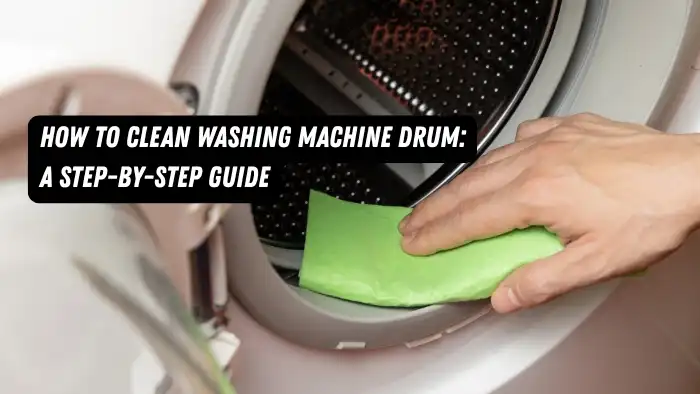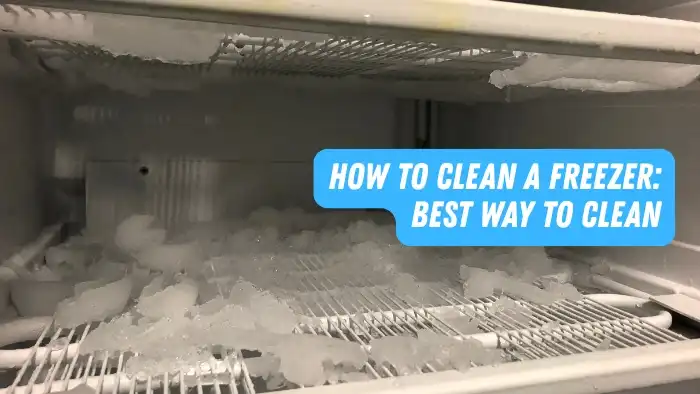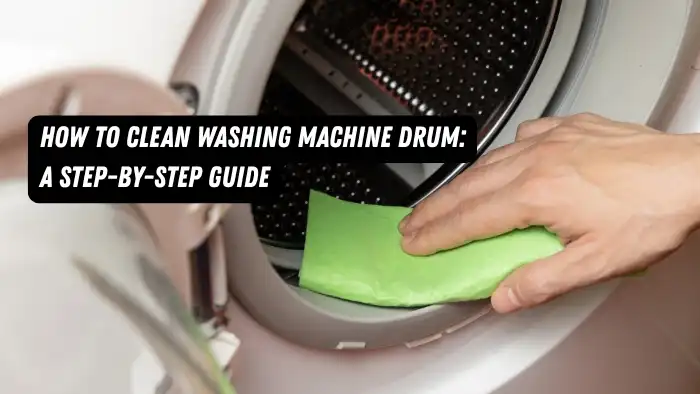
Maintaining your washing machine drum is essential for
ensuring your appliance runs efficiently and keeps your clothes fresh and
clean. Over time, detergent residue, dirt, and even mold can build up inside
the drum, leading to unpleasant odors and less effective washing.
In this guide, we will walk you through the steps on how to
clean the washing machine drum, so you can keep your machine in top shape.
Why Cleaning Your Washing Machine Drum Is Important
Regularly cleaning your washing machine drum is crucial for
several reasons:
Prevents Unpleasant Odors
Detergent and fabric softener residues can accumulate in the
drum and other parts of the washing machine, creating a breeding ground for
mold and mildew. This can lead to bad smells that can transfer to your clothes.
Improve Efficiency
A clean drum ensures that your washing machine operates at
peak efficiency. When the drum is free from buildup, it can spin more freely,
leading to better washing performance and less wear and tear on the machine.
Extends the Lifespan of Your Washing Machine
Regular maintenance, including cleaning the drums, can help
extend the life of your washing machine. By keeping the drum clean, you reduce
the risk of breakdowns and the need for costly repairs.
Ensures Hygienic Washing
A dirty drum can harbor bacteria and other germs, which can be
transferred to your clothes during the washing process. It can cause severe
skin infections and other skin irritation problems. Cleaning the drum helps
ensure that your clothes come out clean and hygienic.
How Often Should You Clean Your Washing Machine Drum?
The frequency of cleaning your washing machine depends on
how often you use it. As a rule of thumb:
Step-by-Step Guide on How to Clean Washing Machine Drum
Gather Your Supplies
Before you begin, gather the following supplies:
Step 1: Empty the Washing Machine
Ensure that your washing machine is empty. Remove any
clothes, towels, or other items from the drum.
Step 2: Clean the Detergent Dispenser
Remove the detergent dispenser and soak it in warm, soapy
water. Use a toothbrush or small cleaning brush to scrub away any residue.
Rinse thoroughly and dry with a microfiber cloth before reinserting it into the
machine.
Step 3: Run a Hot Water Cycle with Vinegar or Baking Soda
Set your washing machine to the hottest water setting and
the largest load size. Add 2 cups of white vinegar or 1/2 cup of baking soda
directly into the drum. Start the machine and let it complete the full cycle.
Vinegar and baking soda are natural cleaners that can help break down residue
and kill mold and bacteria.
Step 4: Wipe Down the Drum
Once the cycle is complete, use a clean cloth or sponge to
wipe down the inside of the drum. Pay special attention to any areas with
visible residue or mold. For stubborn spots, use a toothbrush or small cleaning
brush.
Step 5: Clean the Door Seal
The rubber door seal can trap water, dirt, and detergent
residue, leading to mold growth. Wipe down the seal with a cloth dipped in
vinegar or a mild detergent solution. Be sure to clean all the crevices and
folds. Dry the seal thoroughly with a microfiber cloth.
Step 6: Run a Second Hot Water Cycle
For extra thorough cleaning, run a second hot water cycle
with no detergent or cleaning agents. This will help rinse away any remaining
residue.
Step 7: Wipe Down the Exterior
Do not forget to clean the exterior of your washing machine.
Wipe down the control panel, door, and other surfaces with a damp cloth and
mild detergent.
Tips for Keeping Your Washing Machine Drum Clean
Leave the Door Open
After each washing, leave the door open to allow the drum to
air out and dry. This helps prevent mold and mildew growth.
Use the Right Amount of Detergent
Using too much detergent can lead to residue buildup. Follow
the manufacturer’s recommendations for the correct amount of detergent to use
for each load.
Remove Wet Clothes Promptly
Leaving wet clothes in the washing machine can create a damp
environment that promotes mold growth. Remove your clothes as soon as the cycle
is finished.
Perform Regular Maintenance
In addition to cleaning the drum, regularly clean the
detergent dispenser, door seal, and filter to keep your washing machine in top
condition.
Commercial Washing Machine Drum Cleaners
If you prefer using a commercial product, there are several
washing machine drum cleaners available on the market. These cleaners are
specifically formulated to break down residue and kill mold and bacteria.
Follow the manufacturer’s instructions for the best results.
Conclusion
Cleaning your washing machine drum is a simple but essential
task that can help extend the life of your appliance and ensure your clothes
come out fresh and clean. By following the steps outlined in this guide, you
can keep your washing machine drum in top condition and prevent unpleasant
odors and buildup. Regular maintenance and a few preventative measures can go a
long way in keeping your washing machine running efficiently.
By knowing how to clean washing machine drum and utilizing washing machine service when needed, you take important steps towards maintaining a hygienic and efficient laundry routine. Happy cleaning!







